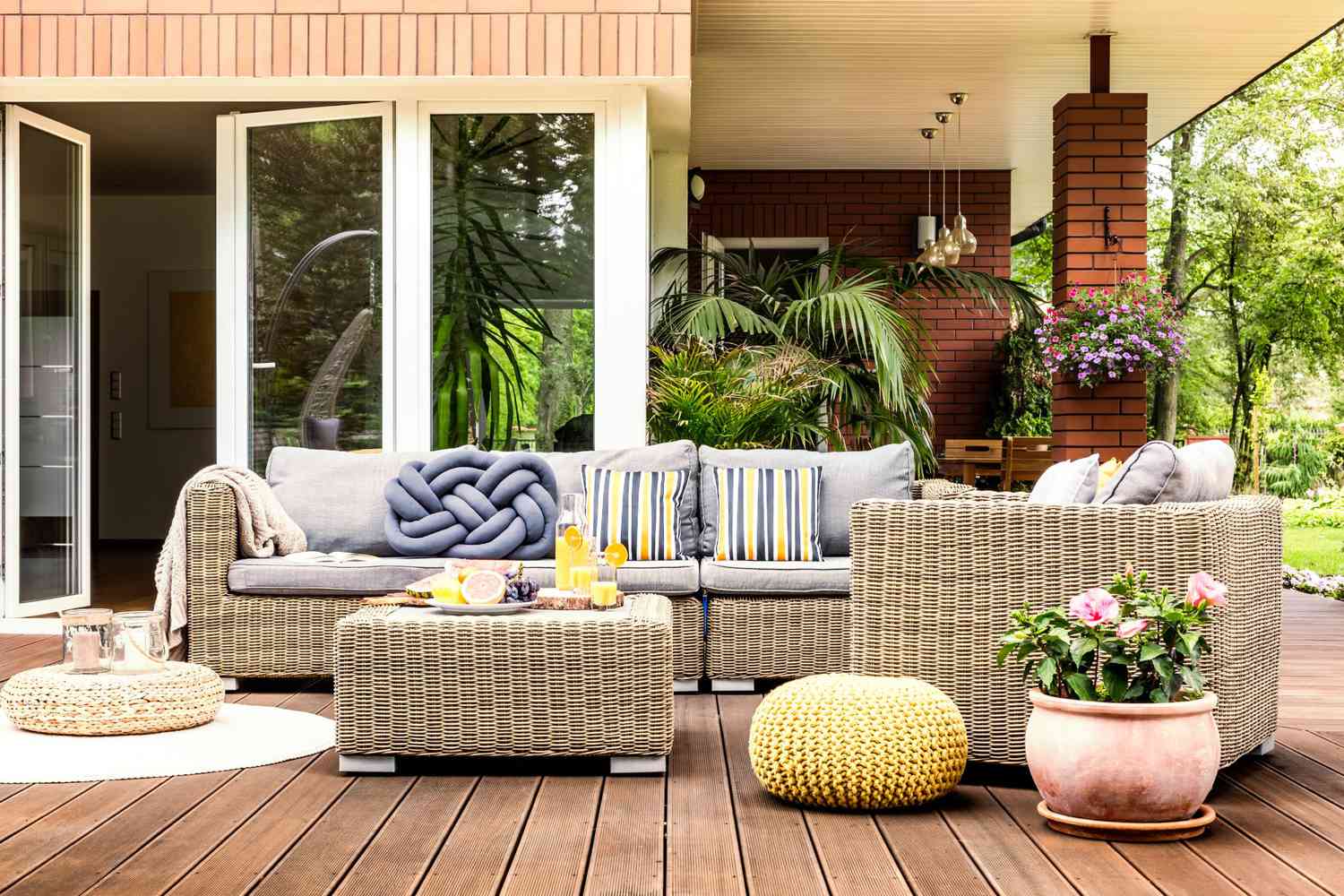Wicker furniture exudes a timeless charm and adds a touch of natural elegance to any indoor or outdoor space. Whether it’s a cozy rattan chair on a sunny patio or a classic wicker rocking chair in a living room, these pieces of furniture are beloved for their aesthetic appeal and durability. However, like any other type of furniture, wicker requires regular care and maintenance, especially in different climates where it may be exposed to varying environmental conditions. In this comprehensive guide, we’ll delve into the seasonal care practices that will help you keep your wicker furniture looking its best, regardless of where you live.
Introduction
Wicker furniture, with its intricate weaves and rustic charm, has been a staple in homes for centuries. Crafted from natural materials such as rattan, bamboo, or seagrass, wicker furniture adds warmth and character to any space. However, to ensure its longevity and beauty, proper care is essential, particularly in diverse climates where factors like sunlight, humidity, and temperature fluctuations can impact its condition.
Understanding Wicker Furniture
Before diving into the seasonal care guide, it’s essential to understand the basics of wicker furniture. Wicker refers to the weaving technique used to create furniture and decorative items from natural or synthetic materials. Common materials used in wicker furniture construction include rattan, bamboo, cane, and seagrass. These materials are known for their strength, flexibility, and natural beauty, making them ideal for crafting durable and stylish furniture pieces. For some tips and comprehensive guide, click here.
Seasonal Care Guide
A. Spring
As the weather warms up and nature comes back to life, it’s time to give your wicker furniture some much-needed attention.
- Cleaning and Dusting Tips: Start by gently cleaning your wicker furniture with a soft brush or cloth to remove any dust or debris that may have accumulated over the winter.
- Inspecting for Damage: Check for any signs of damage, such as loose or broken weaves, and make any necessary repairs to ensure the structural integrity of the furniture.
- Applying Protective Coatings: Consider applying a protective coating or sealant to help safeguard your wicker furniture against moisture and UV damage during the upcoming summer months.
B. Summer
Summer brings long days, warm temperatures, and plenty of opportunities to enjoy your outdoor wicker furniture.
- Protection from Sunlight: To prevent fading and sun damage, position your wicker furniture in shaded areas or use umbrellas or awnings to provide additional protection from direct sunlight.
- Regular Cleaning: Keep your wicker furniture looking its best by regularly cleaning it with a mild soap and water solution and a soft brush or cloth.
- Checking for Mold and Mildew: In humid climates, keep an eye out for signs of mold or mildew growth, especially on outdoor wicker furniture. Clean any affected areas promptly to prevent further damage.
C. Autumn/Fall
As the leaves start to change and temperatures begin to drop, it’s time to prepare your wicker furniture for the cooler months ahead.
- Preparing for Cooler Temperatures: If you live in an area with harsh winters, consider bringing your outdoor wicker furniture indoors or covering it with protective covers to shield it from the elements.
- Storing or Covering Furniture: Proper storage or covering can help prevent moisture damage and extend the life of your wicker furniture during the offseason.
- Repairing Damage: Before winter sets in, inspect your wicker furniture for any damage and make any necessary repairs to ensure it’s in good condition for the next season.
D. Winter
Winter can be tough on wicker furniture, especially in colder climates where freezing temperatures and snowfall are common.
- Proper Storage Techniques: If possible, store your outdoor wicker furniture in a dry, climate-controlled environment during the winter months to protect it from moisture and freezing temperatures.
- Protection from Moisture: If storing indoors isn’t an option, cover your wicker furniture with waterproof tarps or furniture covers to shield it from snow and moisture.
- Indoor Care Tips: If you choose to keep your wicker furniture outdoors during the winter, regularly inspect it for signs of damage and clean it as needed to prevent mold or mildew growth.
Special Considerations for Different Climates
Wicker furniture care can vary depending on the climate you live in. Here are some special considerations for different climates:
A. Tropical/Hot Climates
- Preventing Heat Damage: To prevent heat damage and fading, avoid placing wicker furniture in direct sunlight for extended periods.
- Humidity Control: In humid climates, use dehumidifiers or moisture-absorbing products to control humidity levels and prevent mold or mildew growth.
- Choosing Appropriate Materials: Opt for wicker furniture made from synthetic materials or treated natural fibers that are resistant to heat and humidity.
B. Dry/Arid Climates
- Preventing Cracking: To prevent wicker furniture from drying out and cracking, regularly apply a protective coating or oil to keep the fibers hydrated.
- Hydration and Maintenance: Hydrate wicker furniture regularly with water or specialized products designed to restore moisture to dry fibers.
- Sheltering from Sun Exposure: In arid climates with intense sunlight, provide shade or use protective covers to shield wicker furniture from UV rays that can cause fading and damage.
C. Humid/Subtropical Climates
- Combatting Mold and Mildew: In humid climates, regularly clean and inspect wicker furniture for signs of mold or mildew growth, and use mold-inhibiting products as needed.
- Ventilation and Airflow: Ensure proper ventilation and airflow around wicker furniture to prevent moisture buildup and promote drying.
- Regular Inspections: Conduct regular inspections of wicker furniture in humid climates to identify and address any issues before they worsen.
Tips for Long-Term Wicker Furniture Care
To ensure the long-term beauty and durability of your wicker furniture, consider the following tips:
- Invest in Quality Covers: Invest in high-quality covers or storage solutions to protect your wicker furniture from the elements when not in use.
- Use Appropriate Cleaning Products: Use gentle, non-abrasive cleaning products and techniques to avoid damaging the delicate fibers of wicker furniture.
- Regular Inspections: Regularly inspect your wicker furniture for signs of wear and tear, and address any issues promptly to prevent further damage.
- Seek Professional Assistance: For extensive repairs or restoration work, consider seeking the assistance of professional furniture restorers who specialize in wicker furniture.
Conclusion
In conclusion, proper care and maintenance are essential for preserving the beauty and longevity of wicker furniture, especially in diverse climates where environmental factors can impact its condition. By following the seasonal care guide and considering the special considerations for different climates outlined in this article, you can ensure that your wicker furniture remains a cherished part of your home for years to come. So, whether you’re enjoying lazy summer days on your outdoor wicker patio set or cozying up by the fireplace with your favorite wicker armchair in the winter, remember to give your wicker furniture the care and attention it deserves.





